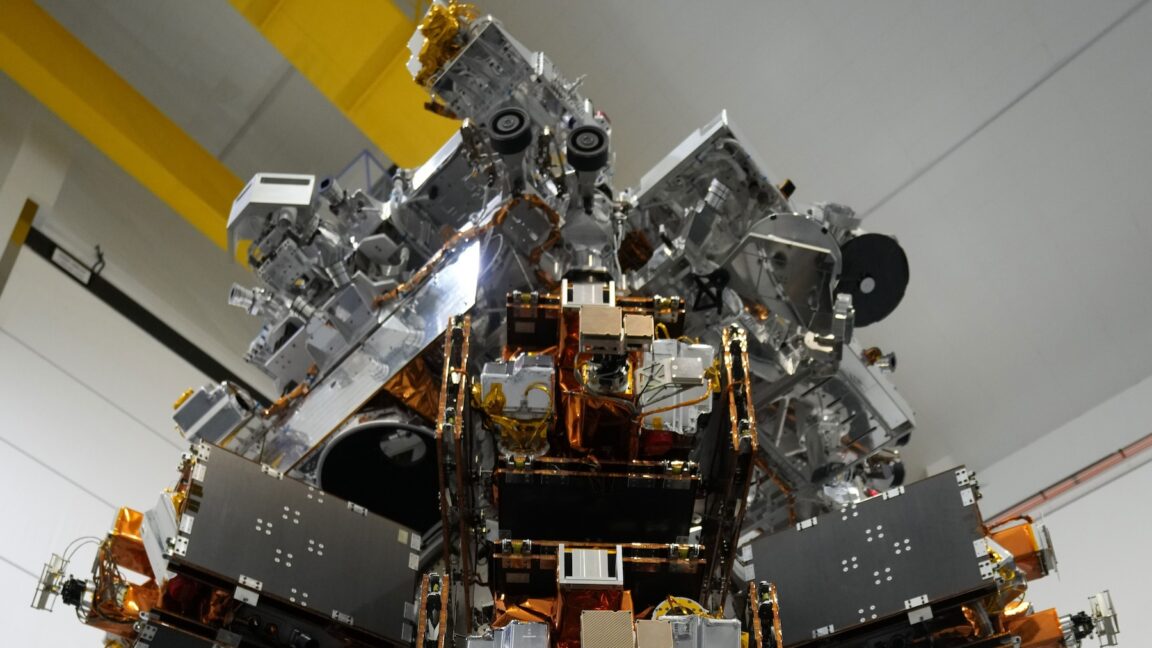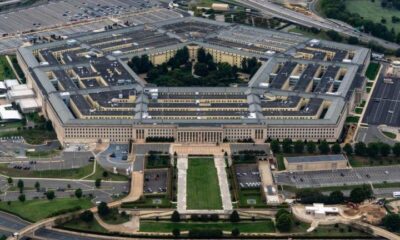Science
Space Force Unveils New Naming System for Future Satellites

The United States Space Force has introduced a new naming and designation system for its military satellite programs, marking a significant step in streamlining its operations. In a memorandum signed in 2023 by then-Lt. Gen. Shawn Bratton, the Space Force outlined a comprehensive framework for naming its “weapon systems” both on the ground and in orbit. This initiative aims to simplify existing nomenclature and enhance clarity, as the military transitions from outdated acronyms to more descriptive titles.
The document, titled Space Force Instruction 16-403, establishes mandatory compliance for all new programs developed after the effective date. It does not require existing satellites to be renamed but emphasizes that all new systems must receive a designated identifier. The new scheme will utilize letters to indicate each system’s purpose, followed by numbers or additional letters that describe its model and design series.
Revamping Military Nomenclature
Historically, the U.S. military has struggled with a convoluted naming system. For example, the Space Force previously launched a satellite known as GSSAP 6, which was catalogued as USA-325 once in orbit, and referred to under a separate designation USSF-8. This multiplicity of names can lead to confusion among those not deeply familiar with military terminology.
John Shaw, a retired lieutenant general who contributed to the discussions surrounding this new naming scheme, noted that efforts to modernize satellite nomenclature began as early as 2018. “We were trying to fit it into the Air Force nomenclature and hit a dead end,” Shaw explained. “Now that we have a Space Force, we can start over. I’m glad to see that it’s becoming reality.”
The new naming convention aims to categorize satellites based on their mission and operational environment. For example, an upcoming missile warning satellite designated WH-12 will be the 12th in a series operating within a highly elliptical orbit. Similarly, a satellite in the GPS IIIF series in medium-Earth orbit might be named NM-10F.
Clarifying Satellite Functions
The Space Force’s naming structure includes letters that denote the basic mission of the satellite. For instance, ‘A’ stands for Attack, ‘B’ for Battle Management, and ‘R’ for Reconnaissance, among others. Additionally, the second letter indicates the satellite’s operational environment, such as ‘G’ for Geosynchronous Orbit or ‘L’ for Low-Earth Orbit.
This systematic approach will not only provide clarity but also enhance operational efficiency. “I love the idea of getting a nomenclature,” Shaw remarked, emphasizing the need for clear and meaningful designations. He criticized the previous acronym GSSAP as being unnecessarily complex and not reflective of the program’s objectives.
The current satellite program, which includes the GSSAP reconnaissance constellation, is the first to adopt these new naming guidelines. Officials have announced that the next-generation reconnaissance satellites will be referred to as RG-XX, with ‘RG’ indicating their role in reconnaissance missions in geosynchronous orbit.
Significantly, the new RG-XX satellites will feature in-orbit refueling capabilities, addressing a major limitation of the existing GSSAP platforms. This innovative feature is expected to enhance operational flexibility and longevity in space. Shaw highlighted the importance of this advancement, stating, “It’s significant because that’s really the first time that the Space Force has said we want an operational platform to be refuelable.”
The Space Force has also shown a willingness to incorporate popular names alongside official designations, reminiscent of the F-16 Fighting Falcon and F/A-18 Hornet. The instruction states that names should be brief, consisting of no more than two short words, and should not infringe on existing trademarks.
As the Space Force embarks on this new era of satellite identification, the shift aims to bring clarity and operational efficiency to military space operations, ensuring that both military personnel and the public can better understand the roles and capabilities of these vital assets.
-

 Politics2 weeks ago
Politics2 weeks agoSecwepemc First Nation Seeks Aboriginal Title Over Kamloops Area
-

 World4 months ago
World4 months agoScientists Unearth Ancient Antarctic Ice to Unlock Climate Secrets
-

 Entertainment4 months ago
Entertainment4 months agoTrump and McCormick to Announce $70 Billion Energy Investments
-

 Lifestyle4 months ago
Lifestyle4 months agoTransLink Launches Food Truck Program to Boost Revenue in Vancouver
-

 Science4 months ago
Science4 months agoFour Astronauts Return to Earth After International Space Station Mission
-

 Technology3 months ago
Technology3 months agoApple Notes Enhances Functionality with Markdown Support in macOS 26
-

 Top Stories1 month ago
Top Stories1 month agoUrgent Update: Fatal Crash on Highway 99 Claims Life of Pitt Meadows Man
-

 Sports4 months ago
Sports4 months agoSearch Underway for Missing Hunter Amid Hokkaido Bear Emergency
-

 Politics3 months ago
Politics3 months agoUkrainian Tennis Star Elina Svitolina Faces Death Threats Online
-

 Politics4 months ago
Politics4 months agoCarney Engages First Nations Leaders at Development Law Summit
-

 Technology4 months ago
Technology4 months agoFrosthaven Launches Early Access on July 31, 2025
-

 Lifestyle2 months ago
Lifestyle2 months agoManitoba’s Burger Champion Shines Again Amid Dining Innovations










